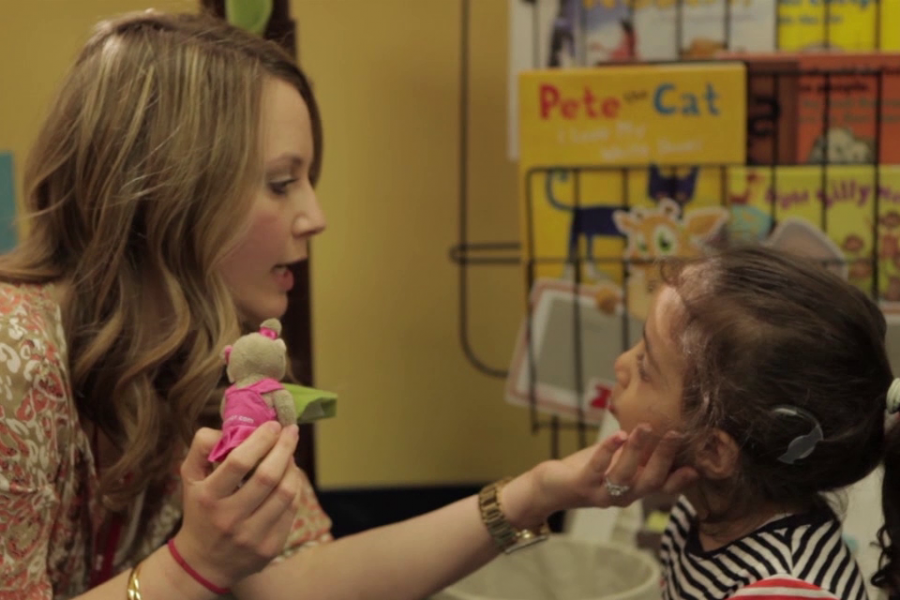The population of children identified with hearing loss is getting younger and younger—a challenge that Illinois State University is addressing head-on by training highly skilled early interventionists.
Illinois State’s deaf and hard of hearing listening and spoken language graduate certificate program aims to increase the number of personnel qualified to provide early intervention for Illinois children with hearing loss. It’s one of several programs offered in the College of Education, a national leader in special education.
Illinois State’s program is unique in part because it recruits and trains people from all three disciplines who want to work in early intervention— speech-language pathologists, teachers of the deaf, and audiologists. Students in the one-year program learn how to empower families and use the latest technology, and by the end of that year they’re ready to apply for their early intervention credential.
Learn more about this innovative program in our two-part video series below:
Part 1: Partnering with Child’s Voice
Students in the graduate certificate program get real-world experience through Child’s Voice, a listening and spoken language program and school in Wood Dale that serves children up to age 7.
Illinois State students are exposed to home-based visits alongside their Child’s Voice mentors, and they also do a one-week summer clinical practicum inside the school.
Kim Lepper ’08, ’14, is a graduate of Illinois State’s certificate program and now teaches at Child’s Voice:
Part 2: Putting training into practice
Jackie Anderson finished the graduate certificate program in 2012.
The developmental therapist has worked with many children with hearing loss since then, including 2-year-old Gracelynn, who was born with unilateral hearing and wears a hearing aid in her left ear.
Anderson, based in the Rockford area, has worked with the girl since she was just a baby. And just as important, she’s built a strong working relationship with Evelyn Taylor, the girl’s mother.
The need for early interventionists like Anderson has only increased as more and more newborns with hearing loss are identified through earlier screenings. The need is even greater in certain parts of Illinois.
“There’s a real need, a real lack of providers, so Jackie is there providing services to children who would otherwise not get those services. She’s really making a difference where she lives and works,” said Wendy Deters, co-coordinator of the certificate program at Illinois State.
Contact STATEside’s editor at rmdenha@IllinoisState.edu.

